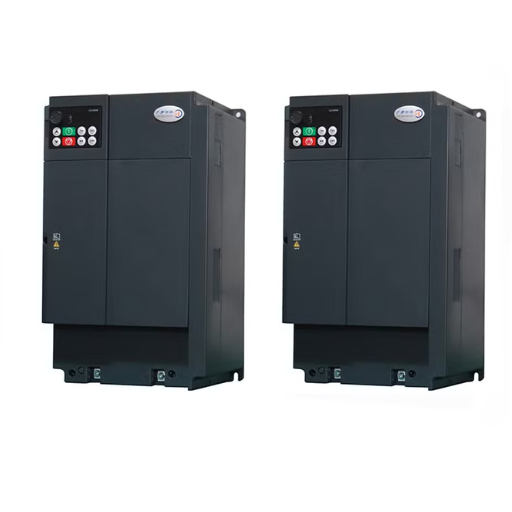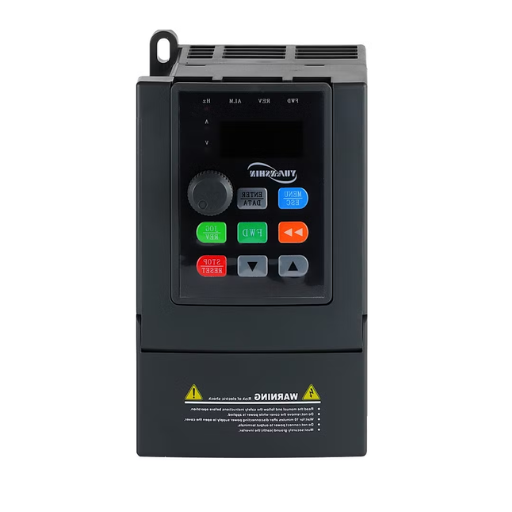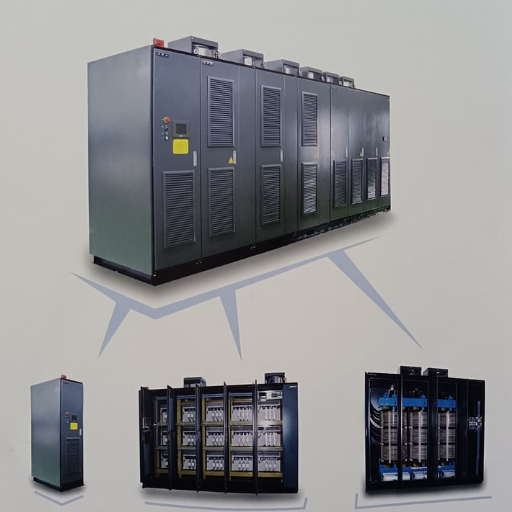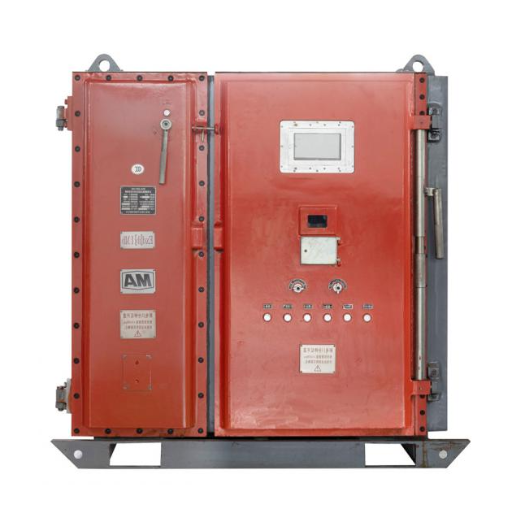High voltage frequency converters are the underappreciated backdrop of modern technology and infrastructure. These great big machines convert electrical energy to fit applications ranging from industrial machinery to systems for renewable energy. But what possibilities are open to them, and what is their importance? The fundamental tones of this blog post explore high voltage frequency converters: their aim, function, and key interest in industrial applications. Whether you are an engineer, a tech buff, or just someone curious about how advanced electrical systems work, this article will tell you about these tools and their increasingly essential benefits for efficiency and innovation.
Introduction to High-Voltage Frequency Converters

An HVFC is a high-voltage frequency converter whose purpose is to change the frequency of a power supply for a given system requirement. They allow a motor or a machine to run efficiently, working on a varying frequency setup. Because of the demand for some varying frequency, electrical energy must be converted into the frequency of requirement; whereas by reducing this conversion, energy efficiency, operational cost, and smooth machine performance can be significantly enhanced. They are almost always seen in the corporate setup, including industries like manufacturing, renewable energy, and transportation, thereby aiding in the modernization and optimization of systems.
Definition and Overview
Frequency converters are electronic devices that alter the frequency of an electric signal according to the specific requirements of different types of machinery, improving energy efficiency and performance in various industrial applications.
Importance in Modern Industry
Frequency converters play an important pivotal role in modern industrial processes by controlling the precise speed of motors to achieve high energy efficiency and operational reliability. It is said that frequency converters enable energy savings of 30-50% in motor-driven systems; thus, they significantly reduce production costs and the environmental impact. That’s why industries such as manufacturing, HVAC, and renewable energy rely heavily on frequency converters to optimize their respective processes. In manufacturing, for example, these converters facilitate smooth speed changes for conveyor belts and machine tools to keep the products consistent and high-quality. Using frequency converters in HVAC operations to control the speed of pumps and fans decreases energy consumption when usage is low.
While pushing for more eco-friendly ways, industries are now increasingly turning to frequency converters for renewable energy applications. For instance, they are widely used besides wind turbines, where the variable wind speeds are converted into a stable electrical output. This converts frequency not only for the stability of grid integration but also for maximizing energy harvest from renewable sources.
According to global market data, the frequency converter market will be valued at roughly $33 billion by 2030 due to increasing investments in industrial automation and energy-efficient technologies. The versatility and capability to address the needs of present-day industry make frequency converters an indispensable factor in innovation and sustainability.
Key Components of Frequency Converters
In my view, frequency converters consist of three vital parts: the rectifier, the inverter, and the DC link. The rectifier converts the input AC into DC, the DC link smooths this power, and finally, the inverter is responsible for converting back to AC with the specified frequency and voltage. These coordinate with each other to achieve the desired power conditioning that works for various applications with excellent efficiency and flexibility.
Working Principle of High-Voltage Frequency Converters

High-voltage frequency converters work by changing the frequency and voltage of electrical power to suit industrial applications. Hence, conversion starts with the rectifier that changes incoming high-voltage AC into DC. This process is usually carried out with high voltage and current ratings by diode or thyristor-based rectifier alternatives, as demanded by large-scale processes.
In the DC link, the stage stabilizes and smooths the DC power put out by the rectifier, mainly using capacitors or inductors to reduce ripples and keep the flow steady. This stage is important in ensuring the reliability and efficiency of the system.
The inverter stage is then the power stage, which converts stabilized DC into AC power of the desired frequency and voltage. Modern-day high-voltage frequency converters use IGBTs or similar semiconductor technology for their inverter stage. By applying PWM methods, very accurate control of output frequency and voltage can be realized, thus enhancing the responsiveness and adaptability of these systems. For instance, PWM can reach an efficiency of more than 95%, improving the performance of applications that demand a lot of energy.
Among the many industries where the control of the speed of motors with very high power is needed are oil and gas, mining, and manufacturing. High-voltage modern frequency converters play the key role in achieving energy efficiency by reducing conversion-related losses and optimizing motor performance. Recent studies state a projection of the frequency converter market growth at the CAGR of 6.5% between 2023 and 2030, giving hardly any doubt as to their continued adoption in all kinds of activities.
How Frequency Conversion Works
It employs frequency change to alter the input power frequency to the desired output frequency using high-end electronic components, controlling the motor’s speed and energy consumption exactly.
AC Motor Interactions
AC motors cooperate with frequency converters for ideal performance and efficiency. These interactions allow motor speed and torque control without compromising their functioning, making them suitable for various applications. Here are five key points about the interaction:
- Speed Control
Frequency converters adjust the motor speed by changing the input frequency to ensure optimal operation for certain tasks. For instance, a reduced motor speed is preferable for energy conservation during light load operations.
- Torque Optimization
By regulating its voltage-to-frequency ratio, the frequency converter ensures the motor produces adequate torque for proper functioning under all load conditions.
- Energy Efficiency
Energy savings at lower speeds or in free-run mode when stopping down become the most important factor in cost savings and environmental friendliness.
- Soft Start and Stop
Frequency converters can control the acceleration and deceleration of AC motors, preventing mechanical shocks and wear that commonly occur when starting and stopping.
- Harmonic Mitigation
The advanced frequency converters have harmonic minimizing capabilities to ensure motor stability and increase life span.
These factors portray how frequency converters are instrumental in modern industries with high energy efficiency and precision.
Electromechanical Processes Involved
Starting with the electromechanical processes, it is important to observe how mechanical motion is generated from electric energy, which is essentially what a frequency converter does. This almost always begins with AC being rectified into DC. After all incoming power is turned into DC, the controlled AC is modulated with an internally variable voltage and frequency. This state-of-the-art control provides efficient motor operation, extremely effective in adapting to varying load conditions.
Applications of High-Voltage Frequency Converters

|
Application Area |
Key Points |
|---|---|
|
Renewable Energy |
Stabilize solar and wind energy outputs |
|
Industrial Motors |
Control the speed of crushers, fans, and conveyors |
|
Energy Storage |
Enhance efficiency in energy storage systems |
|
Electric Vehicles |
Provide robust control for EV applications |
|
Smart Grids |
Integrate renewable energy into grids |
|
Medical Equipment |
Reduce electromagnetic interference (EMI) |
|
Aerospace and Defense |
High power density for compact systems |
|
Oil and Gas |
Optimize pumps and compressors |
|
Building Materials |
Improve efficiency in kilns and blowers |
|
Uninterruptible Power Supply |
Rapid response to load changes |
Industrial Uses
High voltage frequency converters find numerous industrial applications across various industries, bringing efficiency and precision to operations. Large-scale plants employ them mainly to regulate the speed and torque of high-power motors used in conveyors, pumps, and compressors. For example, the global industrial frequency converter market was valued at around 23 billion in 2022 and is projected to grow at a CAGR of 6.6% from 2023 to 2030, due to increasing demand for energy-efficient equipments and automation in industries.
In oil and gas operations, these converters were under the precise control of drilling operations and pumping processes, ensuring safety and conservation. In chemical and pharmaceutical industries, frequency converters maintain the speed of mixing and processing, which is key to product quality. Another necessary usage is in the electric power sector, where frequency converters connect the renewable energy generation sources, such as wind and solar, to the existing grid by stabilizing and synchronizing the power system. This makes them a crucial element in meeting the increasing energy demand worldwide sustainably.
Hence, their vast applications speak to the importance of high-voltage frequency converters in modern industries in sustaining productivity and environmental needs.
Energy Generation and Distribution
Generation and distribution of energy ensure the stability and sustainability of power access. In this process, high-voltage frequency converters are of the utmost importance in integrating renewable sources such as wind and solar. By stabilizing and synchronizing power systems, this technology harmonizes additional demand-side energy needs with environmental sustainability efforts, which is the very need of modern industries.
Transportation and Electric Vehicles
The transportation sector has witnessed a revolutionary transformation in the age of electric vehicles (EVs). With the rise of green technology and environmental consciousness, electric cars have been adopted in significant numbers worldwide. These vehicles cut down on greenhouse gas emissions and provide a window to better energy efficiency while reducing the dependence on fossil fuels.
The advantages of electric vehicles:
- Environment Benefits—Electric vehicles do not emit any pollutants into the atmosphere. Their use results in a reduction of air pollution and carbon footprints.
- Cost-Effectiveness – They are much cheaper to use and maintain than internal combustion engine vehicles.
- Energy-Efficiency-Electric motors are considerably more efficient than gasoline or diesel engines; they directly convert electrical energy into motion with little loss.
- Government Incentives—Many countries offer tax credits, rebates, or subsidies to help make EVs more affordable.
- Performance – Instant torque from EVs offers better acceleration and a seamless driving experience.
For these reasons, alongside further improvements in battery technology and charging infrastructure, EVs are stepping into the spotlight as a sustainable form of transportation.
Benefits of Using High-Voltage Frequency Converters

|
Benefit |
Key Points |
|---|---|
|
Energy Efficiency |
Minimize energy loss, improve overall efficiency |
|
Compact Design |
Smaller, lighter components for space-saving |
|
Precise Control |
Accurate motor speed and voltage regulation |
|
Reduced EMI |
Minimize interference with sensitive equipment |
|
Fast Response |
Quick adaptation to load changes |
|
Wide Voltage Compatibility |
Operates efficiently under varying input voltages |
|
High Power Density |
Delivers high power in compact size |
|
Improved Thermal Management |
Less heat generation, simpler cooling systems |
|
Cost Savings |
Reduces energy bills and operational costs |
|
Enhanced Reliability |
Stable operation with built-in safety features |
Energy Savings and Efficiency
Prior to frequency converters’ revolutionary energy-saving attributes, processes were allowed to operate at clock-like speeds. In an industrial environment, the utilization of a frequency converter to control a motor speed leads to a considerable reduction in energy consumption. Electric motors constitute about 45% of the world’s energy consumption, according to the International Energy Agency (IEA). Thus, energy savings with the adoption of frequency converters are sometimes as high as 30%.
Another advantage of frequency converters is the exact adjustment of motor operations that reduces wear and tear, building up an environment of operational efficiency alongside low maintenance costs. Industries with HVAC systems or water pumps achieve profitable energy efficiency using a control strategy with variable speed instead of on/off running at full speed. Data from the US Department of Energy claims that even a little motor slowdown by about 20% will save roughly 50% of the energy.
These energy-saving measures contribute to significant cost reductions in the long run, thus making high voltage frequency converters an essential asset for industries that wish to reduce their shortcomings while enhancing performance criteria.
Improved Motor Performance
It is stated that a high-voltage frequency converter is primarily used for improving motor performance, which ultimately affects operational efficiency and reliability. Some of the improvements and their respective benefits are:
Precise Speed Control
The frequency converter accommodates precise speed control, thus allowing operations to move in sync with the requirements of a given process. Because of the attained precision, performance is optimal, and excessive wear and tear to machinery is avoided.
Less Mechanical Stress
Being able to stop and start with a smooth transition, the converters can reduce sudden torque peaks which could otherwise cause mechanical stresses on the motor and the attached machinery, thus eventually prolonging their lifetime.
Energy Conservation
Varying the speed of the motor to suit load requirements ensures that energy is not consumed during low-demand periods—this energy conservation results in reduced operational costs and carbon footprint.
Better Process Control
Higher responsiveness and better control of motor performance benefit all industrial processes for consistency and reliability, especially in applications that require precision, such as manufacturing and automation.
Lower Maintenance Costs
Reduced stress on components allows maintenance to be infrequent, resulting in reduced downtime and maintenance costs for repairs and replacements.
Flexibility in Operation
Meeting the various industrial requirements necessitates operational flexibility. Motors that can change speed and torque in accordance with given requirements allow some degree of customization and, therefore, varying levels of efficiency in different realizations. In other words, adaptability allows processes to be adapted to the specific requirements of a given task without forcing the system to be dismantled and reinstalled from scratch, thus saving time and money.
Future Trends and Advancements in Technology

Fast developments in automation, artificial intelligence, and renewable energy integration encompass the future of technology. Process automation and AI, thus, bring efficiency to industries by simplifying processes, making better decisions, and even predicting maintenance activities. On the other hand, advancements in renewable energy technologies, such as more efficient solar panels or energy storage methods, support the global agenda towards sustainability. Complementing these trends is the IoT, promoting better connectivity and information exchange between devices that, in turn, create more intelligent and responsive systems. On their own or together, these enhancements heighten the possibilities for innovation, efficiency, and environmental consciousness.
Innovations in Converter Technology
| Innovation | Key Points |
|---|---|
|
High-Frequency Converters |
Minimize switching and magnetic losses |
|
Soft-Switching Techniques |
Reduce energy loss during switching |
|
Bidirectional Inverters |
Enable energy flow in both directions |
|
Pulse Width Modulation (PWM) |
Precise voltage and waveform control |
|
IGBT Technology |
High efficiency and fast switching speeds |
|
Multi-Modular Converters |
Enhance performance in electrical traction |
|
Resonant Power Converters |
Improve stability and efficiency |
|
Advanced Thermal Management |
Simplify cooling with less heat generation |
|
Grid Integration Systems |
Optimize renewable energy for smart grids |
|
Compact Designs |
Smaller, lighter systems for space efficiency |
Integration with Renewable Energy Sources
Converter technology, working hand in hand with green renewables, is revolutionizing the energy scene, so much so that the generation from wind, solar, and hydro systems is being utilized now more efficiently than previously. Thus, converters perform a critical function: they get the energy from renewable sources into the grid by converting variable frequency or DC (direct current) into AC (alternating current) for usage.
Advanced inverter technology maximizes the power output from photovoltaic cells and facilitates smoother power flow to the grid in solar technology. The huge global capacity of solar PV, over 1000 GW in the year 2023, as reported by IRENA, showed the explosive growth and demand for efficient converter technology to handle such capacity.
Wind turbines also use power-electronics-based converters to smooth the variable output caused by ever-changing wind conditions. These days, multi-level converters are being utilized in modern wind energy systems, which massively boost system performance by cutting down on energy losses at very high voltage control. Wind energy presently accounts for around 7% of global electricity production, and that share is set to grow as further improvements continue in converter integration.
While these developments proceed, research and innovations in making converters more compatible with new and emerging renewable technologies continue. As global acceptance of renewable energy builds, optimized converter systems will remain at the center of achieving energy efficiency and sustainability goals, thus paving the way for a smooth transition into a cleaner energy future.
Predicted Market Trends
The demand for renewable energy converters will continue to increase rapidly as people require sustainable solutions. New technology and innovation would result in an efficient yet flexible system compatible with new energy sources. This would make the converter gain its place as one of the key elements in worldwide energy efficiency and sustainability goals.
References
-
IEEE Xplore:
- Review of high-frequency high-voltage-conversion-ratio DC–DC converters
- This paper discusses high-frequency and high-voltage conversion technologies, providing insights into their design and applications.
-
IEEE Xplore:
- The analysis of the practice of using of high-voltage frequency converters ACS5000
- This article explores high-voltage frequency converters’ practical applications and operating experiences, specifically the ACS5000 model.
-
MDPI (Energies Journal):
- Resonant power frequency converter and application in high-voltage and partial discharge test of a voltage transformer
- This paper presents a resonant power frequency converter system for high-voltage applications, including testing voltage transformers.
- Top High Voltage Frequency Converter Suppliers In China
Frequently Asked Questions (FAQ)
What does a high-voltage frequency converter do?
A high-voltage frequency converter converts alternating current (AC) from one frequency to another using electrical equipment designed for different power supply systems. This conversion is essential for applications where equipment operates at varying frequencies, ensuring compatibility and efficiency.
How does a high-voltage frequency converter control motor speed?
The frequency converter controls motor speed by adjusting the output frequency supplied to the electric motor. It can change the motor’s speed and torque by varying the frequency, allowing for precise speed control in various applications.
What are the main components of a high-voltage frequency converter?
The main components of a high-voltage frequency converter typically include rectifiers, inverters, and control circuits. Rectifiers convert AC to DC, while inverters convert DC back to AC at the desired frequency, enabling the control of voltage and frequency levels.
Can a high-voltage frequency converter convert AC to DC?
Yes, a high-voltage frequency converter can convert AC to DC through rectification. This allows for generating a stable DC voltage, which can be used in various applications requiring direct current.
What is the role of transistors and IGBTs in high-voltage frequency converters?
Transistors and IGBTs (Insulated Gate Bipolar Transistors) are crucial switching devices for high-voltage frequency converters. They regulate the flow of electrical energy, enabling efficient power conversion and minimizing switching losses during operation.
How does a high-voltage frequency converter affect power consumption?
A high-voltage frequency converter can optimize power consumption by adjusting the input power and output frequency to match the operational needs of the connected equipment. This reduces energy waste and improves overall efficiency.
What types of applications benefit from high-voltage frequency converters?
High voltage frequency converters are widely used in various applications, including industrial machinery, renewable energy systems, and electric vehicles. They play a vital role in enabling equipment to operate across different voltage and frequency standards, enhancing flexibility and performance.
How do high-voltage frequency converters manage voltage ripple?
High-voltage frequency converters manage voltage ripple through effective filtering and control techniques. Utilizing capacitors and advanced control algorithms minimizes fluctuations in output voltage, ensuring a stable power supply for sensitive equipment.
What is the significance of adjustable frequency and voltage in high-voltage frequency converters?
Adjustable frequency and voltage allow high voltage frequency converters to tailor the power output to specific requirements, providing versatility in operation. This adaptability is essential for applications that demand precise control over speed, torque, and energy consumption.
